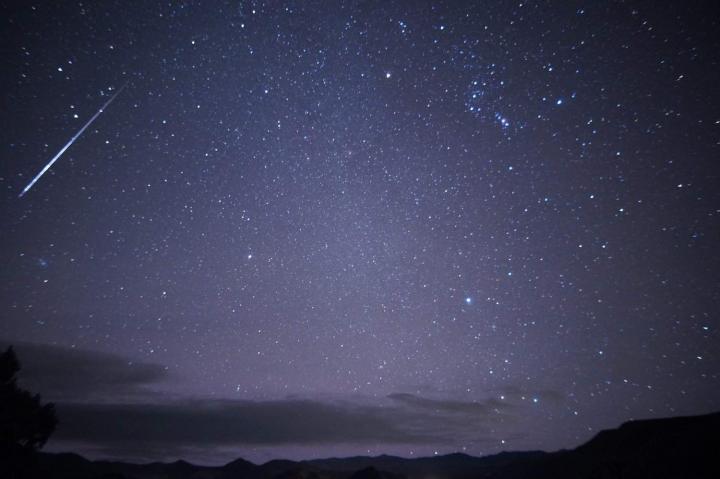On October 14, look up before bed! The Moon and red Mars will pair up in the night sky. Here are Bob Berman’s latest tips for viewing the bright planets this month.
Advertisement
Sky Watch October 2022
by Bob Berman, as featured in The Old Farmer’s Almanac
With the autumnal equinox, the seasons have turned and we’ll enjoy darker night skies ahead—great for seeing some really bright planets and meteor showers! Here are Bob Berman’s highlights:
The Moon and Visible Planets
At nightfall, planets Saturn, Jupiter, and Mars are now worthy targets for backyard telescopes. Find the planets easily by using the Moon as a handy pointer:
- On October 5, that bright planet above the Moon is Saturn. The golden planet shines steadily (versus the twinkling stars) high in the sky from sunset to 2 A.M. (local time).
- On October 8, find the Moon and look below for Jupiter. The Giant Planet shines far brighter than all the stars, rising after sunset in the eastern skies and out all night. Watch it arch across the sky until it’s in the west at sunrise.
- On October 14, look up before bed! Find the Moon and spot Mars very nearby! They’ll pair up just before midnight—separated by only 4 degrees! The Red Planet, which actually appears orange, reaches a brilliant magnitude –0.86 and doesn’t rise in the east until 10 p.m. (local time) in Taurus so don’t bother looking for the pairing earlier in the night.
You’ll know Mars not only by its proximity to the Moon and orangish glow but also because it will appear brighter than most of the nearby stars, and remain high in the sky all night until the sun rises. Also, look above and to the right for the Pleiades star cluster aka Seven Sisters which appear as a tiny dipper. Read more about the Pleiades at Halloween!
Mercury, which reaches a very bright magnitude –1.0, rises for its best 2022 appearance as a “morning star,” especially after the 12th. Look before sunup towards the east.
Venus is hidden in the sun’s glare now and move behind the Sun (as seen from Earth) when ithas its superior conjunction on the 22nd.
Find the Moon rise/set times and also planet rise/set times.
A partial solar eclipse, not visible from the U.S. or Canada, appears over parts of Greenland, Iceland, Europe, northeastern Africa, the Middle East, western Asia, India, and western China on the 25th. See 2022 eclipse dates.
October 8 to 9: Draconid Meteor Shower
Unfortunately, the Draconids will be washed out by the full Moon (on the 9th) this year. If you wish to watch, your best best is the evening of October 8.
Late evening is the best time to see these shooting stars, which will radiate from the constellation Draco, the dragon (near the bright star of Vega).
The Draconids aren’t a major meteor shower (about six meteors per hour) but they do kick off the busy meteor shower season! Plan ahead and mark your calendars. See the Meteor Shower Guide.
October 9: Full Hunter’s Moon Rises
October’s full Moon appears on October 9, 2022. Similar to last month’s Harvest Moon, the Hunter’s Moon is tied to an astronomical event, the autumnal equinox, and rises around the same time for several nights in a row. Start looking for it on Tuesday, October 8!
Traditionally, the Hunter’s Moon marked the time to go hunting in preparation for the cold months ahead. Learn more about Hunter’s Moon—and why it often appears bigger!

October 20 to 21: Orionid Meteor Shower
The Orionids traditionally have the best shooting stars in October. This year’s looking good! The new Moon falls on October 25. So, at the Orionids’ peak, the Moon will be in a waning crescent phase and rise in the early morning hours. It’ll be up there, but not too bright.
The Orionids radiate from the well-known constellation Orion the Hunter, specifically from a point near the hunter’s club. When looking for the meteor shower, look away from the Moon towards darker regions of the sky. See the Meteor Shower Calendar more more info.











Comments